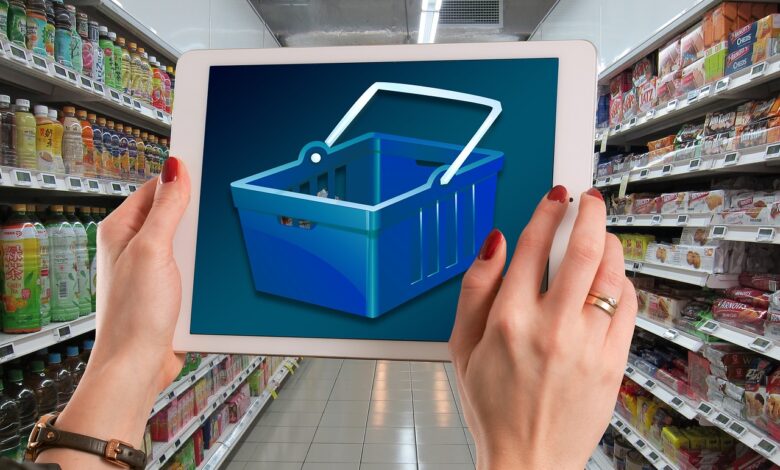Shopping Security: Payment Methods, Security Measures

In the fast-paced digital age, where the convenience of online shopping has become an integral part of our daily lives, the paramount concern of ensuring shopping security has emerged as a critical imperative. As consumers increasingly navigate the expansive realm of e-commerce, the vulnerability to cyber threats and identity theft looms large. Safeguarding personal information, financial data, and online transactions has thus become a pressing necessity in order to foster a secure and trustworthy shopping environment for individuals worldwide.
Online Shopping Security
In today’s digital age, online shopping has become an integral part of our lives, offering convenience and a vast array of products at our fingertips. However, with the increasing prevalence of cyber threats, ensuring the security of online transactions has never been more crucial.
- Secure Websites: When engaging in online shopping, it is imperative to ensure that the website is secure. Look for “https://” in the URL, indicating a secure connection. Avoid entering personal information on websites lacking this essential security feature.
- Strong Passwords: Create strong and unique passwords for your online shopping accounts. Incorporate a mix of letters, numbers, and symbols to enhance the complexity and security of your password. Avoid using easily guessable information, such as birthdays or common words.
- Two-Factor Authentication (2FA): Enable two-factor authentication whenever possible. This adds an extra layer of security by requiring a secondary form of verification, such as a code sent to your mobile device, in addition to your password.
- Update Software and Devices: Regularly update your operating system, browser, and antivirus software to ensure that you have the latest security patches. Outdated software may expose you to vulnerabilities that cybercriminals can exploit.
- Beware of Phishing Attempts: Exercise caution when clicking on links in emails or messages, especially those claiming to be from online retailers. Phishing scams often mimic legitimate websites to steal sensitive information. Verify the authenticity of communications before providing any personal details.
- Use Trusted Payment Methods: Opt for secure payment methods, such as credit cards or reputable online payment systems. Avoid using public Wi-Fi networks for financial transactions, as they may lack adequate security measures.
- Review Privacy Settings: Take the time to review and adjust the privacy settings on your online shopping accounts. Limit the amount of personal information you share, and be mindful of the permissions granted to apps and websites.
- Monitor Account Activity: Regularly check your bank and credit card statements for any unauthorized transactions. Report any suspicious activity to your financial institution promptly.
By implementing these practices, consumers can enhance their online shopping security and minimize the risks associated with cyber threats. Staying vigilant and adopting a proactive approach to online security is key to enjoying the benefits of e-commerce safely.
Credit Card Fraud Prevention
Credit card fraud is a pervasive issue in today’s digital age, with criminals constantly devising new methods to exploit vulnerabilities. Effective prevention strategies are crucial to safeguarding both consumers and financial institutions.
| Prevention Measure | Description |
|---|---|
| EMV Technology | EMV (Europay Mastercard Visa) technology enhances security by utilizing chip cards instead of magnetic stripe cards. The chip generates unique codes for each transaction, reducing the risk of counterfeit card use. |
| Tokenization | Tokenization replaces sensitive card data with unique tokens, minimizing the impact of data breaches. Even if a token is intercepted, it is useless without the corresponding authentication data. |
| Two-Factor Authentication | Adding an extra layer of verification through two-factor authentication (2FA) significantly strengthens security. This often involves a combination of something the user knows (password) and something the user possesses (security code or device). |
| Machine Learning Algorithms | Advanced machine learning algorithms analyze patterns of legitimate and fraudulent transactions. These systems can detect anomalies and flag potentially fraudulent activities in real-time, improving accuracy over time. |
| Geolocation Tracking | Monitoring the geographical location of card transactions helps identify suspicious activities. If a transaction occurs in an unusual or unexpected location, it may trigger an alert for further investigation. |
| Behavioral Analysis | Analyzing user behavior, spending patterns, and transaction history aids in detecting unusual activities. Sudden changes in behavior, such as large purchases or transactions at odd hours, can be indicators of potential fraud. |
Implementing a combination of these measures creates a robust defense against credit card fraud, fostering a secure financial environment for both consumers and businesses. Continuous innovation and adaptation to emerging threats remain essential in staying one step ahead of fraudsters.
Secure Payment Methods
In the rapidly evolving landscape of digital transactions, ensuring secure payment methods has become paramount. Businesses and consumers alike are seeking reliable and robust solutions to safeguard financial transactions from potential threats.
- Encryption Technology: Secure payment methods heavily rely on advanced encryption technologies. End-to-end encryption ensures that sensitive information, such as credit card details and personal data, is transformed into unreadable code during transmission. This safeguards against interception and unauthorized access, providing a secure channel for online transactions.
- Tokenization: Tokenization is another essential element in securing payment processes. This involves replacing sensitive data with unique tokens, making it nearly impossible for cybercriminals to access valuable information even if they manage to intercept the transaction. Tokenization adds an extra layer of protection, reducing the risk of data breaches.
- Two-Factor Authentication (2FA): Implementing two-factor authentication is an effective strategy to enhance payment security. By requiring users to provide two forms of identification, such as a password and a unique code sent to their mobile device, the risk of unauthorized access is significantly reduced. This additional layer of verification adds an extra barrier against fraudulent activities.
- Secure Sockets Layer (SSL) Certificates: SSL certificates are fundamental in securing the communication between a user’s browser and the website’s server. They encrypt data during transit, assuring users that the information they provide, especially during payment processes, remains confidential. Websites with SSL certificates display a padlock icon in the address bar, indicating a secure connection.
- Biometric Authentication: Biometric authentication, such as fingerprint or facial recognition, adds a high level of security to payment methods. These unique biological identifiers are difficult to replicate, providing a secure and convenient means of verifying the user’s identity during transactions.
E-Commerce Security Measures
E-commerce security is a critical aspect of online business operations, ensuring the protection of sensitive customer information and fostering trust in digital transactions. Implementing robust security measures is essential to safeguard against cyber threats and potential data breaches.
Security Measures in E-Commerce:
| Security Measure | Description |
|---|---|
| SSL/TLS Encryption | Utilizing Secure Socket Layer (SSL) or Transport Layer Security (TLS) protocols to encrypt data transmitted between the user’s browser and the e-commerce website, preventing unauthorized access. |
| Secure Payment Gateways | Employing trusted and PCI DSS compliant payment gateways to handle financial transactions securely, protecting customer payment information from being compromised. |
| Two-Factor Authentication | Implementing an additional layer of security by requiring users to verify their identity through a second authentication method, such as a code sent to their mobile device. |
| Regular Security Audits | Conducting routine security audits and vulnerability assessments to identify and address potential weaknesses in the e-commerce platform, ensuring ongoing resilience against evolving threats. |
| Data Encryption at Rest | Encrypting stored data to protect customer information even when it is not actively being transmitted, adding an extra layer of security against unauthorized access. |
| Fraud Detection Systems | Integrating advanced fraud detection systems and machine learning algorithms to monitor transactions and identify suspicious activities, helping prevent fraudulent transactions. |
| Strong Password Policies | Enforcing strict password policies, including requirements for complex passwords and regular password updates, reducing the risk of unauthorized access to user accounts. |
| Regular Software Updates | Keeping all software, including the e-commerce platform, plugins, and third-party applications, up-to-date with the latest security patches to address known vulnerabilities. |
Consumer Protection in Retail
Consumer protection in retail refers to the set of measures and regulations designed to safeguard the rights and interests of consumers during their interactions with retail businesses. The primary goal is to ensure fair and transparent practices, fostering a secure marketplace for buyers.
Several key aspects contribute to effective consumer protection in the retail sector. Firstly, clear and honest product information is essential. Retailers must provide accurate details about products, including features, pricing, and any potential risks. Misleading advertising or false claims are strictly regulated to prevent consumers from making uninformed decisions.
Another crucial element is the establishment of fair and transparent pricing policies. Consumers have the right to know the actual cost of a product or service, including any additional fees. Hidden charges and deceptive pricing strategies are prohibited to promote fair competition and maintain trust between retailers and consumers.
Product safety standards also fall under the umbrella of consumer protection in retail. Retailers are obligated to ensure that the products they offer meet safety regulations and pose no harm to consumers. In case of defects or hazards, clear procedures for recalls and refunds should be in place to promptly address any issues and protect consumer well-being.
Furthermore, protecting consumer privacy is a growing concern in the digital age. Retailers must handle customer data responsibly, implementing robust cybersecurity measures to safeguard sensitive information. Compliance with data protection laws and regulations is imperative to prevent unauthorized access and potential misuse of consumer data.
Overall, an effective framework for consumer protection in retail involves a combination of legal regulations, industry standards, and ethical practices. By prioritizing transparency, fairness, and safety, retailers contribute to a positive and trustworthy shopping environment, building lasting relationships with consumers.




I think so the procedure very hard and long. I want easy step by step.